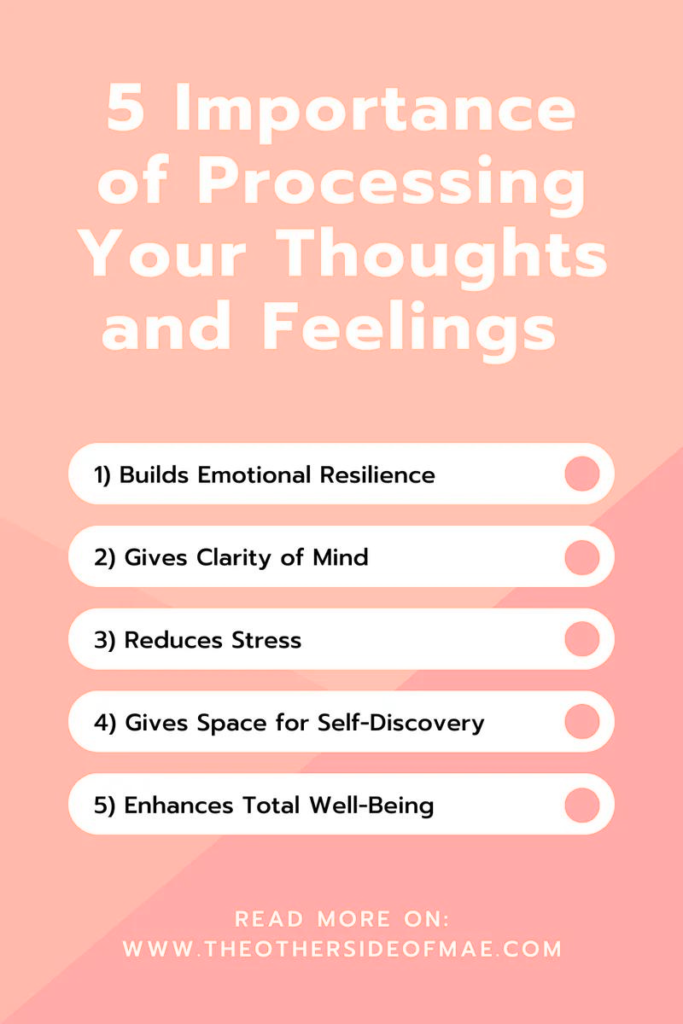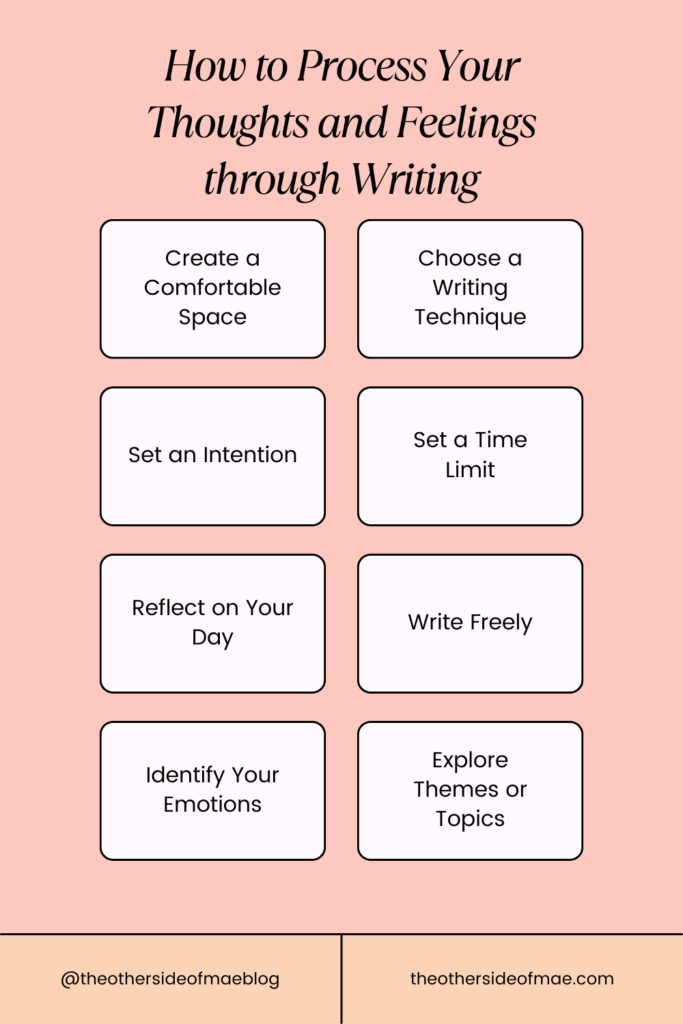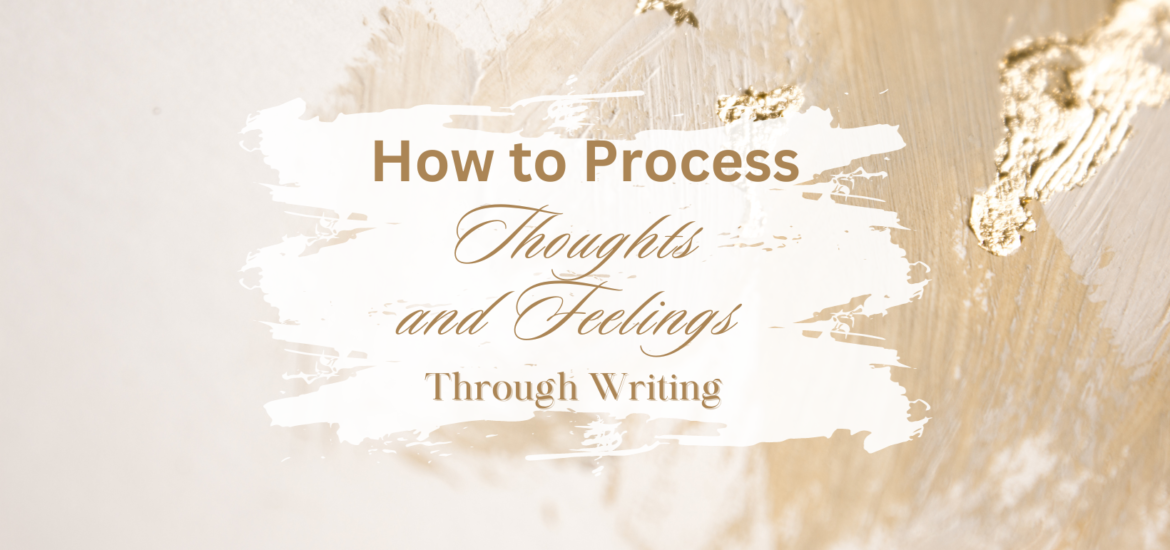This article may contain affiliate / compensated links. For full information, please see our disclaimer here.
In a world where emotions are often suppressed or overlooked, finding healthy outlets to process and understand our thoughts and feelings is more important than ever. As humans, we are complex beings with a wide range of emotions, and ignoring or bottling them up can have lasting negative effects on our mental and emotional well-being. Like me, I am not that articulate in letting out my emotions. I had this habit of only keeping to myself what I feel, one of the causes of my post-traumatic stress disorder (PTSD). That’s where writing comes in.
Writing has long been recognized as a powerful tool for self-expression and self-reflection. It allows me to delve deep into my thoughts and feelings, giving them a voice and transforming them into tangible words on a page. By putting pen to paper or fingers to keyboard, I can unlock a world of emotions that may have been hidden beneath the surface. Whether through journaling, expressive writing, or even writing letters I never intend to send, the act of writing allows me to process, understand, and heal.
In this article, let me take you to the transformative power of writing as a tool for emotional processing. Let us delve into various techniques and exercises that can help unlock and understand our emotions, providing a pathway towards greater self-awareness and personal growth. Join me as we embark on a journey of self-discovery and emotional liberation through the written word!
- The Importance of Processing Thoughts and Feelings
- The Therapeutic Benefits of Writing
- Steps in Processing Thoughts and Feelings Through Writing
- Resources and Tools for Enhancing Your Writing Process
- 1. Journals and Notebooks
- 2. Inspirational Websites and Writing Prompts
- 3. Mind Mapping Tools
- 4. Word Processors and Writing Apps
- 5. Digital Notebooks
- 6. Grammar and Editing Tools
- 7. Writing Communities
- 8. Audiobook Services
- 9. Writing Courses and Workshops
- 10. Time Management Apps
- 11. Reading Lists and Book Recommendations
- 12. Writing Retreats and Conferences
The Importance of Processing Thoughts and Feelings
Our thoughts and feelings are the intricate threads that weave the fabric of our inner world. Understanding and processing them is not merely a psychological exercise; it’s a fundamental aspect of emotional well-being and personal growth. Here’s how processing my thoughts and feelings helps me big time:
1. Builds Emotional Resilience
Processing my thoughts and feelings allows me to build emotional resilience. By acknowledging and understanding my emotions, I become better equipped to navigate life’s challenges without being overwhelmed.
2. Gives Clarity of Mind
The act of processing thoughts brings clarity to the mind. When I articulate my thoughts through writing, I gain a clearer understanding of my values, beliefs, and the factors influencing my decision-making.
3. Reduces Stress
Unprocessed thoughts and emotions can manifest as stress. It builds up in the nervous system resulting to chronic illnesses. I’ve experienced this as I developed an arthritis in my spine at a very young age. By taking the time to process and express emotions, it helps alleviate the burden on our mental and physical well-being.
4. Gives Space for Self-Discovery
Delving into my thoughts and feelings is my wonderful journey of self-discovery. It unveils layers of my personality, providing insights into my aspirations, fears, and motivations. This ultimately contributes to my personal growth, being a late bloomer that I was.
5. Enhances Total Well-Being
The importance of processing thoughts and feelings lies in nurturing overall well-being. It is a form of self-care that promotes a harmonious balance between mind and body, contributing to a healthier and happier life.
The Therapeutic Benefits of Writing
The written word has a profound ability to transcend the confines of paper and become a therapeutic vehicle for self-discovery, healing, and personal growth. Here are some compelling reasons why I engaged in writing as a powerful form of my therapy:
1. Emotional Release
Writing provides me a safe space to release my pent-up emotions and express my thoughts that I find challenging to articulate verbally. The act of putting emotions into words is so liberating, offering a sense of relief to me.
2. Healing from Trauma
Writing is my therapeutic outlet as I overcome my childhood trauma. Narrating my personal stories on paper allows me to externalize and process my traumatic experiences. It allows me to acknowledge, accept, and honour all the bad experiences I’ve had for me to heal.
3. Mindfulness and Presence
The act of writing encourages me to be mindful. As I focus on the present moment with my inner experiences, I increase self-awareness. It allows me to stop dwelling in the past and not to be anxious for the future.
4. Goal Setting and Manifestation
Writing down goals, dreams, and aspirations can serve as a powerful motivator. The process of articulating and visualizing these aspirations helps me set intentions and work towards my desired outcomes.

Steps in Processing Thoughts and Feelings Through Writing
Engaging in a structured process of writing can be a powerful way to navigate and process your thoughts and feelings. Here are steps to guide you through this reflective journey:
1. Create a Comfortable Space
Find a quiet and comfortable space where you can focus without interruptions. Ensure you have the necessary tools—notebook, journal, or a digital device—readily available. My comfortable space is my yoga mat, my most wonderful place to be! I have my journal and pens always ready by the side as thoughts and feelings surface while I do yoga.
2. Set an Intention
Begin with a brief reflection on your intention for your writing session. What thoughts or feelings are you hoping to explore or understand better? For me to be able to do this, I quiet my mind through meditation. Then I ask myself, “What are we here for for today?”
3. Reflect on Your Day
Start by reflecting on your day. Consider the significant events, interactions, and emotions you experienced. Note any patterns or recurring themes. Sometimes, I’m surprised that a circumstance that happened in a certain day already happened years ago. Then I compare how I reacted years ago versus to that day and see if I’ve grown up or not.
4. Identify Your Emotions
List the emotions you are currently feeling. Be specific and try to name each emotion. Understanding your emotional state is crucial for the processing journey. With this, I often ask myself “How are you feeling towards ________”. Whatever that blank space would be.
5. Choose a Writing Technique
Decide on a writing technique that suits your current state. This could be stream-of-consciousness writing, themed journaling, or a letter to yourself or someone else. I am very fond of writing letters to myself and to people which I never sent to. Remember that story of To All the Boys I’ve Loved Before by Jenny Han? Oh, I’ve done that!
6. Set a Time Limit
If you’re new to expressive writing, set a reasonable time limit, such as 10-15 minutes. As you become more comfortable, you can adjust the duration to suit your needs. Consistency is the key. Just be consistent to meet with yourself every day. It works wonders!
7. Write Freely
Allow your thoughts to flow freely without concern for grammar or structure. Let your pen move or your fingers type as you express whatever comes to mind. Hey, there’s no judgement here! It’s your world and you are your own audience!
8. Explore Themes or Topics
If you prefer a structured approach, choose a theme or topic to explore. This could be relationships, personal growth, challenges, or any area you find relevant to your current thoughts and feelings. Each of us has our own era. Currently, I’m on my childhood trauma healing era. So my journal at the moment is all about conjuring my childhood memories. I’ve been working on this for a year and a half now upon learning of my PTSD.
9. Reflect on Your Visualization
Consider incorporating a visualization exercise. Close your eyes, take a few deep breaths, and visualize a calming scene or a safe space. Describe this visualization in your writing. I often visualize the ocean as I do believe that the waves can take my burdens away.
10. Review and Reflect
After your writing session, take a moment to review what you’ve written. Reflect on any insights gained, patterns observed, or shifts in your emotional state. I’ve observed that most of the times, I start my writing with negative emotions and finish it off with positive ones. That’s how therapeutic writing is! It takes away your bad feelings and replace it with good and happy ones!
By following these steps, you create a structured and supportive framework for processing your thoughts and feelings through writing. Each session becomes an opportunity for self-exploration, reflection, and personal growth.

Resources and Tools for Enhancing Your Writing Process
Exploring and expressing thoughts and feelings through writing can be a powerful and therapeutic process. To enhance your writing experience, there are various resources and tools available that can support and inspire you on your journey. Here’s a guide to some of them:
1. Journals and Notebooks
Physical or digital, journals provide a dedicated space to jot down your thoughts and emotions. Consider using specialized journals, such as gratitude journals or prompts-based notebooks, to guide your writing. Silk and Sonder Journals has it all from hardcopy to soft copy where you can easily use on the go in all digital formats and platforms. Click here to learn more and if you need a little help, hop into my post How to Start Writing on Your Journal.
2. Inspirational Websites and Writing Prompts
Stimulate creativity and self-reflection through websites that offer writing prompts and inspirational content. Prompts can help you delve into specific emotions or memories, making it easier to express your feelings. Platforms like Writing Prompts, 750 Words, or even social media communities can spark new ideas and help overcome creative blocks. If you’re hesitant to write about your feelings, take a look at How to Start Expressive Writing for a little push.
3. Mind Mapping Tools
Applications like MindMeister or XMind help visualize your thoughts and feelings. Create mind maps to organize your ideas, identify connections, and gain insights into the relationships between different emotions or experiences.
4. Word Processors and Writing Apps
Tools like Microsoft Word, Google Docs, or dedicated writing apps such as Scrivener and FocusWriter provide a distraction-free environment for writing. Many also include features like word count tracking, outlining, and collaboration options. If you’re curious about these apps, you may click here for more information.
5. Digital Notebooks
Platforms like Evernote, OneNote, or Notion provide digital notebooks, allowing you to organize ideas, snippets, and inspirations. These tools enable seamless integration between devices, ensuring your thoughts are accessible anytime, anywhere.
6. Grammar and Editing Tools
Tools like Grammarly and ProWritingAid act as virtual writing assistants, offering grammar and style suggestions. These resources enhance the editing process, ensuring your writing is polished and error-free.
7. Writing Communities
Joining writing communities, either online or in-person, provides valuable support and feedback. Websites like Wattpad, Scribophile, or local writing groups connect you with fellow writers, fostering a sense of camaraderie and constructive critique. There are also blogging communities out there. If you want to use blogging as your medium like me, you may want to check How to Start Blogging for insights.
8. Audiobook Services
Listen to audiobooks to expose yourself to diverse writing styles, storytelling techniques, and genres. Platforms like Audible offer a vast library of books, providing a unique perspective on narrative structure and language use.
9. Writing Courses and Workshops
Explore writing workshops or online courses that focus on creative expression and self-reflection. Platforms like Coursera or Skillshare offer a range of courses catering to various writing styles and genres.
10. Time Management Apps
Efficient time management is crucial for writers. Apps like Toggl, Focus@Will, or Pomodoro timers help you stay organized, focused, and productive during your writing sessions.
11. Reading Lists and Book Recommendations
Expand your literary horizons by exploring curated reading lists and book recommendations. Platforms like Goodreads or literary magazines often provide insights into emerging trends and diverse perspectives.
12. Writing Retreats and Conferences
Consider attending writing retreats or conferences to immerse yourself in a creative environment. These events offer networking opportunities, workshops, and a chance to connect with industry professionals.
Remember, the most important aspect of the writing process is to be authentic and true to yourself. Experiment with different resources and tools to find what resonates with you. Let the act of writing become a meaningful journey of self-discovery and expression.
Take it from me. Writing has been helping me process my thoughts and feelings especially these past 2.5 years of living by myself here in Toronto. It exposes the hidden parts of me that should be acknowledged and given attention. Writing therapy has enabled me to manage PTSD, heal my inner child, and do the shadow work. But battling or not battling with mental health issues, writing is for everyone. So I invite and encourage all of you to process your thoughts and feelings through writing, not just to be sentimental but to connect with yourself and for your highest good. Thanks for dropping by today and stay tune for more about processing your thoughts and feelings through writing in this blog!
If you find this article helpful, pin it!

Do you know that you, too, can earn while sharing your life story through writing on your blog? Visit my article How to Make Money by Sharing Your Story for your reference.


Comments